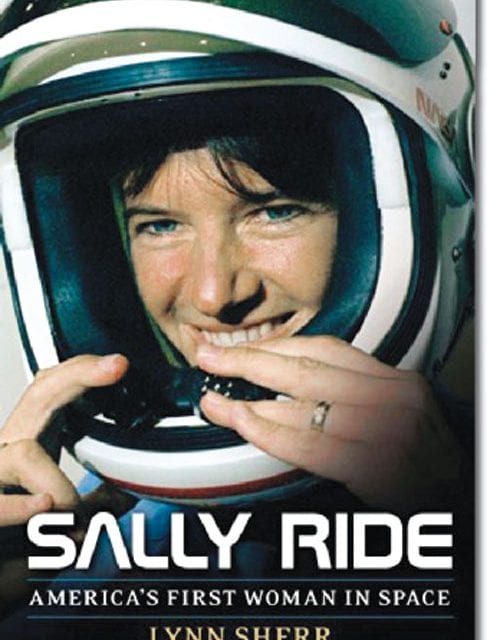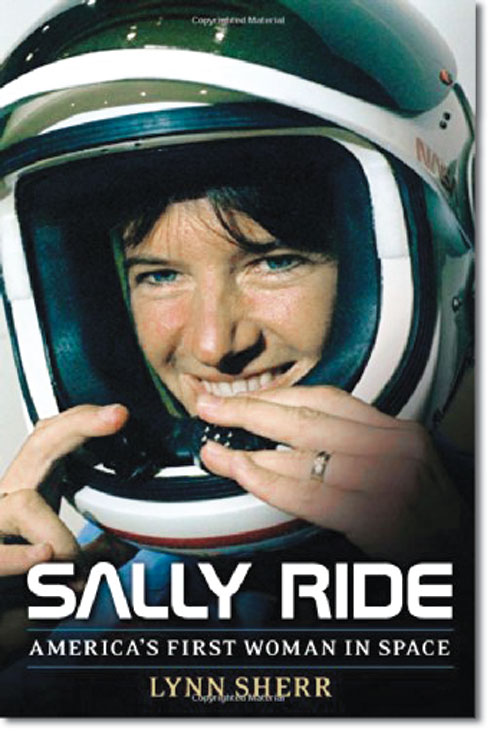Author Lynn Sherr writes about how the American astronaut kept her private life very private
Sally Ride made history in 1983 when she became the first American woman in space. But when she died in 2012, it was one line in her obituary that dominated the news: “She is survived by her partner of 27 years, Tam O’Shaughnessy.”
The heroic astronaut was a lesbian and no one, outside of a small circle of friends and family, knew it. She kept quite a few things about her life private, including her final illness.
One of those surprised by the revelation was ABC broadcaster Lynn Sherr. Sherr had been covering Ride since NASA recruited its first group of women into the astronaut corps. Over the years, the two had become friends, but she had no idea Ride and O’Shaughnessy were in a relationship and she didn’t know about Ride’s cancer until the day she died.
Ride fiercely guarded the truth, Sherr discovered while writing the new biography Sally Ride: America’s First Woman in Space. When Sherr was in California in the spring of 2012, she called Ride to plan a get-together. The day they were supposed to meet, Ride phoned Sherr to say she had the stomach flu and had to cancel. It was only after Ride’s death that Sherr learned from O’Shaughnessy Ride was, in fact, weak that day from a round of chemotherapy.
Sherr said Ride lived her life on five-year plans. In college, Ride had a relationship with another student named Molly. The two loved each other, Molly told Sherr after Ride’s death, but they had no plans for the relationship to extend beyond college. Both expected to marry and have children.
After joining NASA, Ride married fellow astronaut Steve Hawley. Their marriage lasted five years.
When O’Shaughnessy and Ride got together, O’Shaughnessy was ready to commit for the rest of their lives. Ride could only promise five years, so every fifth anniversary O’Shaughnessy would ask Ride if she was ready to re-up for another five.
With the revelation of Ride’s sexual orientation after her death, more criticism came from the LGBT community than from conservatives.
Gays and lesbians saw it as a missed opportunity to show what members of the community could accomplish. O’Shaughnessy didn’t see it that way — the two were too busy accomplishing other things.
Ride joined NASA as part of the first group of astronauts that wasn’t white, military, crew-cut, Christian males, so she understood she was joining an agency that was quite traditional. NASA’s culture was to present a wholesome image of each of its astronauts. Although many were divorced, that was something never mentioned in official biographies.
As late as 1990, the agency tried to ban gays from the agency. Since that time, things have changed, and today NASA has an active LGBT employee resource group.
After leaving NASA in 1987, Ride became director of the California Space Institute and a professor at University of California San Diego. Later, she and O’Shaughnessy wrote children’s books, and she became president of Sally Ride Science to encourage girls to take an interest in math and science.
Sherr said Ride was discrete about her personal life so that she could reach more girls. Ride was afraid parents in places like Texas would refuse to allow their daughters access to her science materials if they knew she was lesbian.
Despite that, Ride didn’t quite live her life in the closet, either. Among her friends was out tennis legend Billie Jean King. The two met when Ride joined the tennis circuit after college. Sherr said she believes King’s experience with a palimony suit that cost her all of her endorsement deals contributed to Ride’s desire for privacy.
During the 1960s, each of the original seven astronauts became household names. Other than names remembered from the Challenger and Columbia disasters, Sally Ride’s is about the last name widely known from the astronaut corps. Although any of the six women hired by NASA could have been the first American woman in space, Ride had a special way of relating to the public. While she joined NASA to do scientific work, she understood that once chosen to be the first American woman in space meant becoming a role model.
Before her first flight, Ride endured questions like, “Do you weep when things go wrong on the job?” After the Challenger disaster, she was the first person appointed to the investigating commission because of her expertise and her ability to relate to the public that would help NASA regain its credibility.
In Sherr’s account, Ride’s contributions to science and space exploration add up to a list of achievements for which the LGBT community can take pride.
This article appeared in the Dallas Voice print edition June 27, 2014.












